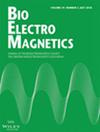Chen Zhang, Congsheng Li, Lei Yang, Wenjing Hou, Mingshan Du, Tongning Wu, Wei Chen
求助PDF
{"title":"Assessment of Twin Fetal Exposure to Environmental Magnetic and Electromagnetic Fields","authors":"Chen Zhang, Congsheng Li, Lei Yang, Wenjing Hou, Mingshan Du, Tongning Wu, Wei Chen","doi":"10.1002/bem.22397","DOIUrl":null,"url":null,"abstract":"<p>Fetal development is vital in the human lifespan. Therefore, it is essential to characterize exposure by a series of typical environmental magnetic and electromagnetic fields. In particular, there has recently been a sharp increase in the twin birth rate. However, lack of appropriate models has prohibited dosimetric evaluation, restricting characterization of the impact of these environmental factors on twins. The present study developed two whole-body pregnant models of 31 and 32 weeks of gestation with twin fetuses and explored several typical exposure scenarios, including 50-Hz uniform magnetic field exposure, local 125-kHz magnetic field (MF), and 13.56-MHz electromagnetic field exposure, as well as wideband planewave radiofrequency (RF) exposure from 20 to 6000 MHz. Finally, dosimetric results were derived. Compared to the singleton pregnancy with similar weeks of gestation, twin fetuses were overexposed at 50-Hz uniform MF, but they were probably underexposed in the RF scenarios with frequencies for wireless communications. Furthermore, the twin fetuses manifested large dosimetric variability compared to the singleton, which was attributed to the incident direction and fetal position. Based on the analysis, the dosimetric results over the entire gestation period were estimated. The results can be helpful to estimate the risk of twin-fetal exposure to electromagnetic fields and examine the conservativeness of the international guidelines.© 2022 Bioelectromagnetics Society.</p>","PeriodicalId":8956,"journal":{"name":"Bioelectromagnetics","volume":"43 3","pages":"160-173"},"PeriodicalIF":1.8000,"publicationDate":"2022-03-01","publicationTypes":"Journal Article","fieldsOfStudy":null,"isOpenAccess":false,"openAccessPdf":"","citationCount":"1","resultStr":null,"platform":"Semanticscholar","paperid":null,"PeriodicalName":"Bioelectromagnetics","FirstCategoryId":"99","ListUrlMain":"https://onlinelibrary.wiley.com/doi/10.1002/bem.22397","RegionNum":3,"RegionCategory":"生物学","ArticlePicture":[],"TitleCN":null,"AbstractTextCN":null,"PMCID":null,"EPubDate":"","PubModel":"","JCR":"Q3","JCRName":"BIOLOGY","Score":null,"Total":0}
引用次数: 1
引用
批量引用
Abstract
Fetal development is vital in the human lifespan. Therefore, it is essential to characterize exposure by a series of typical environmental magnetic and electromagnetic fields. In particular, there has recently been a sharp increase in the twin birth rate. However, lack of appropriate models has prohibited dosimetric evaluation, restricting characterization of the impact of these environmental factors on twins. The present study developed two whole-body pregnant models of 31 and 32 weeks of gestation with twin fetuses and explored several typical exposure scenarios, including 50-Hz uniform magnetic field exposure, local 125-kHz magnetic field (MF), and 13.56-MHz electromagnetic field exposure, as well as wideband planewave radiofrequency (RF) exposure from 20 to 6000 MHz. Finally, dosimetric results were derived. Compared to the singleton pregnancy with similar weeks of gestation, twin fetuses were overexposed at 50-Hz uniform MF, but they were probably underexposed in the RF scenarios with frequencies for wireless communications. Furthermore, the twin fetuses manifested large dosimetric variability compared to the singleton, which was attributed to the incident direction and fetal position. Based on the analysis, the dosimetric results over the entire gestation period were estimated. The results can be helpful to estimate the risk of twin-fetal exposure to electromagnetic fields and examine the conservativeness of the international guidelines.© 2022 Bioelectromagnetics Society.

 求助内容:
求助内容: 应助结果提醒方式:
应助结果提醒方式:


